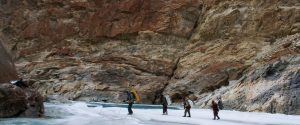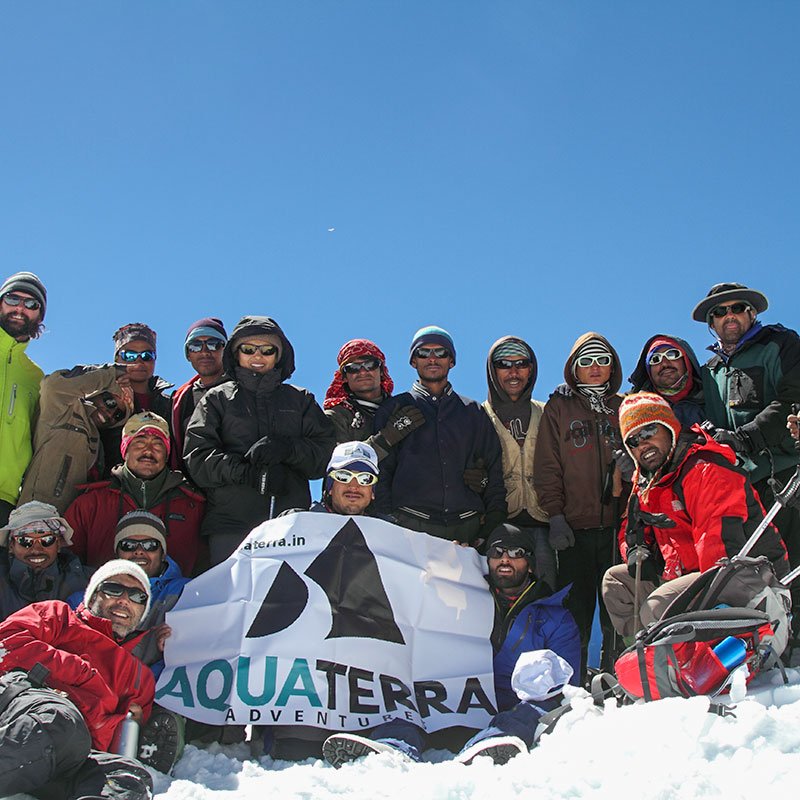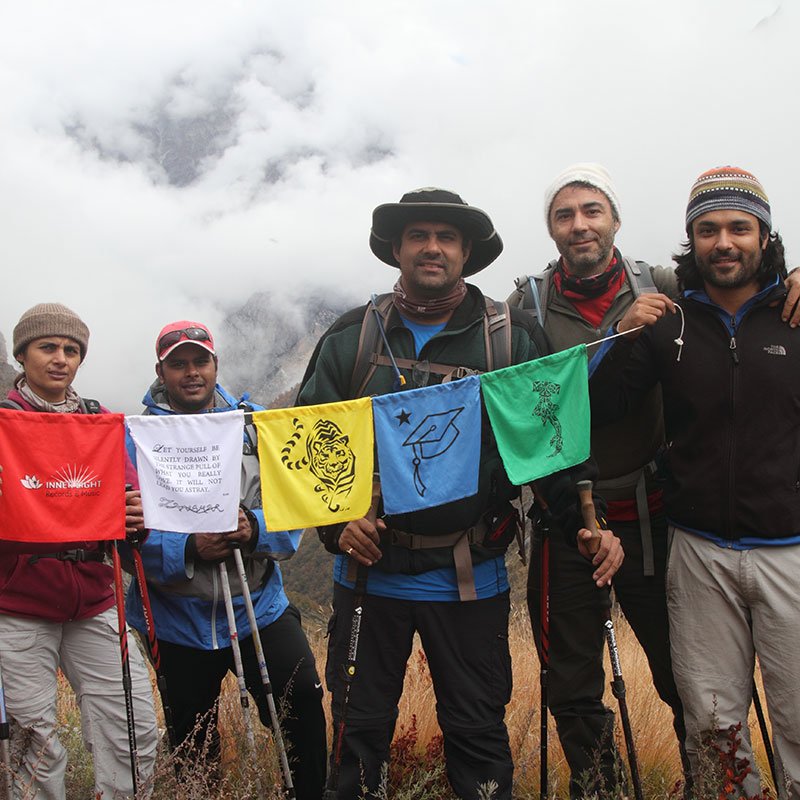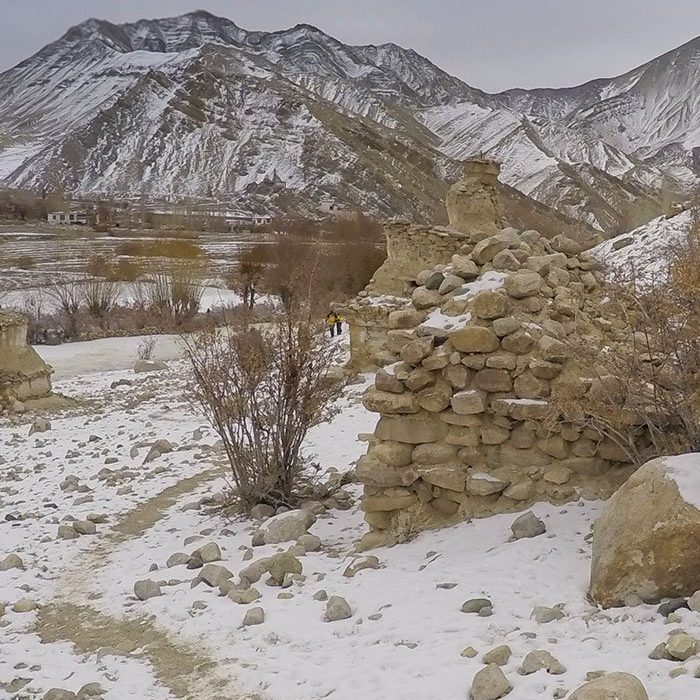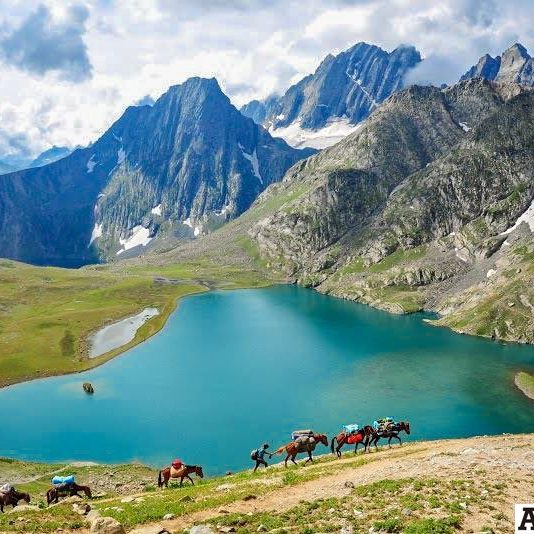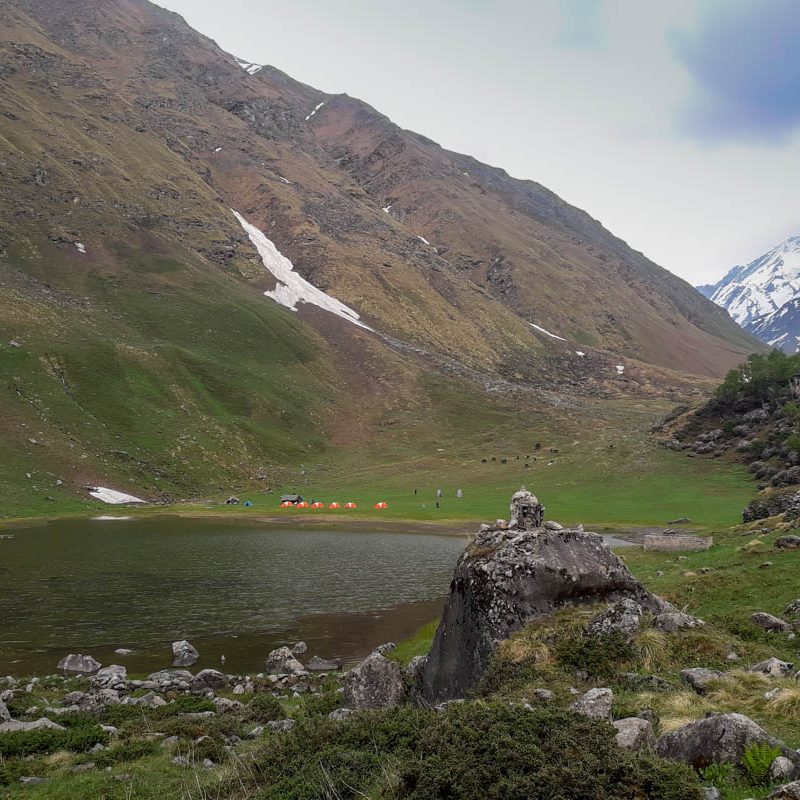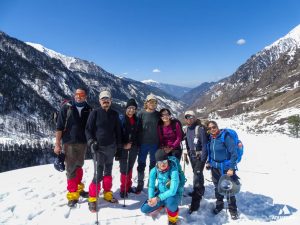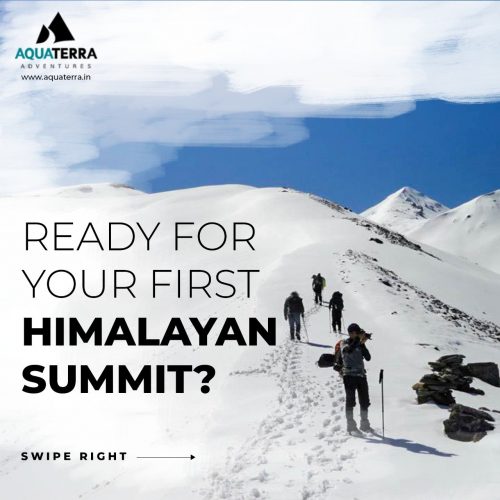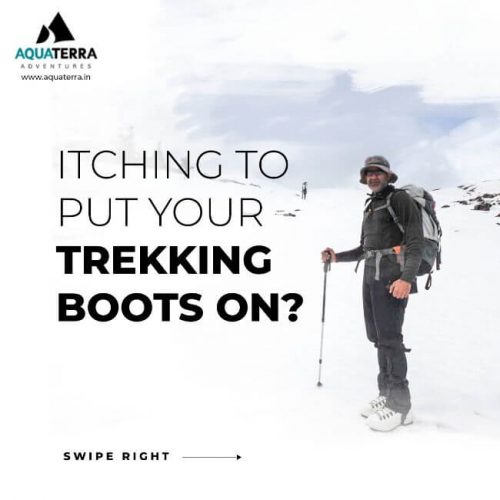The continuing adventures of journalist Dan Oko, as he pursues love and adventure on the Indian Subcontinent. Dan can be contacted via email
Tuesday, April 13, 2004
During last week’s trek, short of major physical harm, if it could have gone wrong, it did. My gut problems did in fact blossom to full-blown giardiasis, or something pretty close to that, while dodgy weather and a case of massive equipment failure threatened to leave us stranded on the trail in northern Uttaranchal. Our goal was to make for Durba Pass, in the shadow of Bander Panch Mountain, the name means “monkey tail” and is a reference to the extensive glacier network and cross down to Yamunotri, the holy headwaters of the Yamuna River, where we would undertake a quick pilgrimage.
Meantime, I was packing my flyrod in case rumors of trout in the small Himalayan lake of Dodi Tal turned out to be real. Unfortunately, in a moment of mental spasticity, I decided to leave behind my gators, which would have provided protection from the snow on the pass and saved my feet a serious soaking. But with bird books, binocs and my Leatherman in tow, I could hardly be accused of featherlight packing. Carrying the rod, on the other hand, spoiled the child — in this case, me; the trout were biting.
I made the hike with a spry, white-haired 50-year-old Dutchman who has been coming to India for 25 years; my apologies Toshin, if you happen to be reading this. We reached Dodi Tal, at about 9,000 feet, after a couple of days of walking. As we made the ascent, joined by a deaf-mute porter, who helped Tosh out with his pack, it became apparent that something was seriously amiss with Toshin’s shoes. At camp, we discovered that he was losing the midsoles from his old Merrell boots, which were disintegrating after sitting in a trunk for a season or two too long.
With ingeniousness I’ve rarely witnessed, Toshin cobbled his footwear back together with some thin wire borrowed from a hillside chai stall and a little rubber cement from his pack. It took us two days to reach the lake about 20 kilometers or 12 miles from the trailhead, but the altitude was no joke and the pace did allow us to see plenty of the valley. It was not until the final miles that Toshin resorted to taping his boots back together, and by the end of our trip, his boots were finished.
Earlier in the trip, though, when we hit Dodi Tal, a small encampment run by the state forest department that also includes a temple to Ganesh, the elephant-headed son of Shiva, and a couple of cabins, I was shocked to actually see fish rising. A religious man might have uttered a prayer or made an offering to Ganesh, but I simply strung my line, tied on the first of what would prove many flies and wham, bam… fish on.
Again and again, through two days, the line would sing taught as hungry, aggressive brown “Himalayan rainbow” trout — the species I seemed to encounter and the local name seemed at odds — in bright breeding colors struck my flies. I was sight casting to rising fish, using nymphs to pull hogs out of the inlet seams at the lake edge, and floating elk hair caddis and tricos along overhangs; catching 25-30 fish in all, and consuming a majority of them or sharing them with local men working in and around Dodi Tal camp.
The men said that the fish were rarely that easy to catch, but the coloration and aggressive knocks made me feel that it was more than just my angling experience paying off. The fish had spotted flanks, with bright red spots inside darker circles and flashy tail fins with occasional swirls of dayglow orange that would have made an old-school Cadillac blush. I ended up releasing many back to the lake, especially the biggest and smallest specimens, which I judged to be the key to future trout stocks.
One day of fishing stretched into two as a series of storms blew over alternate passes to the north and east, sending down bolts of lightning and coating the ground in hail; I wasn’t in a position to complain. Then, the sky cleared and countless midnight stars made it obvious that we had a window to make for the pass without further snow accumulation. Since I hadn’t seen it before, I couldn’t know that the ridgeline would be approaching 12,000 feet, or that we’d face a series of north-facing bowls covered in a crust of snow, slush, and occasional ice. These were not true glaciers, lacking crevasses and avalanche potential, but they were intimidating enough.
Tosh and I were certainly happy to encounter a German couple on the way up with a local guide, who took us on. A 12-hour hike took us from Dodi Tal over the hill to an amazing north-facing circe, where we found ourselves operating on slick white surfaces. I had no trouble keeping up, and Tosh despite being slow managed to stick like a fly to gum for the most part, using a bamboo pole to self-arrest when the snow gave him trouble. The German boy managed well, too, although his high-altitude dance partner was clearly petrified by the steeps and vertiginous mountain vistas. I can think of only a half-dozen treks I’ve personally taken that have so challenged me — and let me say that even with my stomach gurgling and Tosh’s shoes falling apart, both of us suffering from wet feet, I felt happy and strong and connected to the mountains in what surely could be considered a deep spiritual manner.
We spent a night just down from the ridge, sleeping on the cold ground (lack of preparation knew no bounds in this case, as I forgot a sleeping pad too) near a gurgling brook and a collapsed stone shepherd’s hut. The following morning, we descended through the evergreens to a still brown forest of rhododendron. The ice persisted until we got back down to about 9,000 feet, leaving the German gal to slide down the hill on her bum while I skirted the snow, sticking to streambeds and the like in a futile effort to stay dry. We hit the first village after 5 miles, finding no one home but a toothless old codger and a couple of cows and buffalo.
Finally, 15 miles from the treacherous ridge we hit the road head just outside the settlement of Hanuman Chatti. The less said about Hanuman Chatti, the better, as it is one of the few places in India that made me think hometown Dhachula could be considered relatively clean. About 40 workers make their home in HC, either laboring on the road project to connect Yamunotri to Delhi or on the local hydroelectric project, which will harness the swirling whitewater of the Himalayan tributaries of this famous river — floating all the way from the heights of the mountains to the plains of Delhi and further past the Taj Mahal in Agra.
The last jog some 3 miles up the path to the ashram at the birthplace of the river made only too much sense, it’s a pilgrimage that thousands of Hindu faithful make during the Yatra Season. This time for visiting holy shrines of the Himalayas kicks off officially in about 2 weeks, in fact, and the madness of shop-keepers laying in supplies was an eerie contrast to the peace of the mountain valley. Mule trains laden with snack crackers, kerosene tanks, 25-pound bags of rice and sugar passed us at regular intervals. Lunch at the ashram amongst the dreadlocked babas and full-time students featured fried puri bread, a bit of potato and a sweet meal mixture called subi, I think.
Looking back, the challenges of the trek appear slightly less massive than they felt, but the heights and scenery of the Uttaranchal Himalayas should not be underestimated. At times Tosh compared what we were seeing to both Tibet and Nepal, and given our proximity in this neck of the woods to both, I have no doubt that he was apt in his words. With two-days travel now back to Dharchula, I’ll be seeing the landscape once again from the road, but it’s the footpaths I’ve blazed that will stick with me until I hit the trail again. With a little better than a month left in India, you can bet that will be soon.
Saturday, April 03, 2004
The waves of the Ganges called me back again. I spent this afternoon on the river after kicking around for a couple of days. People come here to Rishikesh for different reasons, but the river is central to everybody’s goal: Kayaker, meditator, yoga disciple and beachgoer alike find the green waters a current to enjoy. In the guide shop, hanger-outers chill in the eddy line away from the pressure of India outside the door, while the streets are filled with pretty girls in sarongs and biker boys riding modified motorcycles, making a ruckus that would impress the Brando of Yore.
I’ll cast off lines tomorrow for higher Himalayan projects, dropping the scenesters and seekers for a couple of days. The forward agenda includes trout fishing (fingers crossed, knock wood) on the Asi River, a dip in a hot spring and a hike over a mountain pass. It should be a good time, provided these sour burps are simply bits of Mother Ganga looking for rebirth and not a budding case of giardia. Hmmm…
With that thought, I bid adieu to you. The week ahead holds the promise of untold adventure. Stay tuned.
Friday, April 02, 2004
Happy April! I’ve escaped Dharchula for rafting and trekking. Springtime has arrived without a trace of rain, and the hillsides back in along the upper stretches of the Kali River by our India home are afire in efforts to clear dried grasses and pine needles ahead if summer. This has made breathing a bit inconvenient and has challenged both C and my rather extraordinary run of good health — emergency potty breaks, for instance, have been few and far between of late.
But a bit of coughing and congestion is normal for this time of year, we’re told, because the body is ridding itself of dead winter elements. When the folk wisdom outclasses the intuitive diagnosis (smoke=cough+cold) then sometimes you just accept that everybody gets sick sometimes. But Christ we could use some rain, or perhaps I should refer to Shiva and Vishnu. Regardless, rain is needed — though with monsoon around the bend, you can be assured its coming.
Meanwhile, I’m relocated in Rishikesh through the weekend. This is the yoga capital of the world and a holy little town on the banks of the holy Ganges. We had good fun on the upper stretches through the past couple of days, hitting the river just south of the new Tehri Dam, the fifth highest hydroelectric structure in the world at some 800 feet. The raft trip was run by a swell team of Indian guides from Aquaterra Adventures, and my companions were a team of US expats in the mode of Iron John.
About 20 doctors, businessmen, and students, I suspect some of them were missionaries along with me and a pair of godless Russian kayakers tackled the remote rapids of the Bhagirathi River, which after some 20-30 miles combines with a second stream, the Alakananda, to form the Ganges. Because of the dam, the river itself is running a little low these days (and we need some rain) but tight chutes and technical, bony rapids made for some reasonable excitement.
The scenery was spectacular, watching the flora change on the hillsides as the river twisted, the plantlife shifting from evergreen to palm-studded desert to fruit and nut and Himalayan oak within meters as the mountain slopes created micro-climes. Unfortunately, big group boating scares away most wildlife, but there were monkeys on the shoreline and plenty of birds. Golden eagles, cormorants, a couple of species of kingfisher, ruddy shelducks and white-capped redstarts were among the species I saw. Of course, camping out under the stars to the rumble of the river was pretty darn sweet — and I try not to take it for granted that I’m in the Himalayas.
Pilgrimage season is picking up in this part of the world, which means that Rishikesh is taking on an odd carnival atmosphere with the hippies barely visible amidst the colorful saris and saffron robes of the various Shiva devotees come to town. In the evenings they gather at the banks of the river to make offerings of floating flower boast and incense. Yesterday evening I was surprised to find some young fellows practicing classical wrestling in front of one of the main ashrams, a huge crowd of men cheering and throwing money. Impressive to watch these young bucks flip and twist in the sand, working hard to score points and make a pin. WWF look out!
There’s plenty more to report, including that I have a new understanding of the meaning of life — April Fools! Honestly, I have had so many long days in Dharchula and epic begrudges in Karnataka and now Uttaranchal that I feel almost like a swami watching the world spin ’round. When I first came to Montana to work on a dude ranch, I was studying philosophy in college; ever the wiseacre, I told the guests that I figured deep thought and the mountains went together. Turns out it’s true.
After the weekend, I’ll head out in my quixotic effort to catch some Himalayan trout, and by next week likely be back in my baby’s loving arms. There’s hopefully time for more details of this last couple of weeks, but all my best efforts have been damned to date, so no promises. Meanwhile, suffice it to say that plenty interesting is happening and most of it is good….


